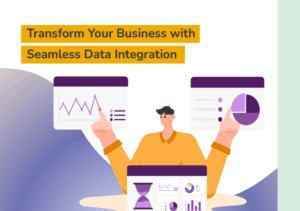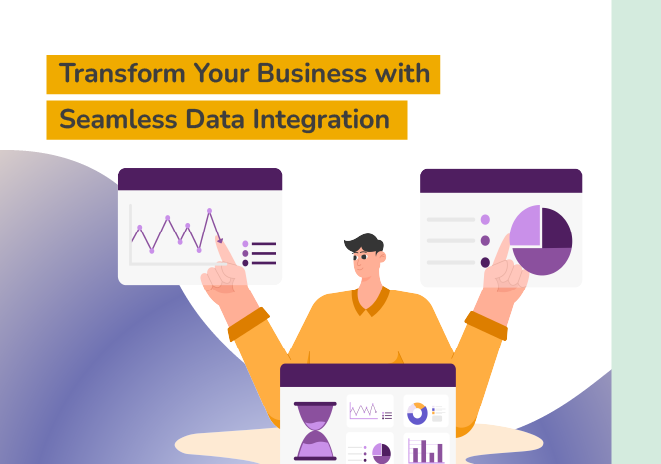What is Predictive Analytics?
Predictive analytics is a transformative domain that uses statistical, data mining, and machine learning techniques to forecast future outcomes based on historical data. By analyzing patterns and identifying trends, predictive analytics helps businesses make informed decisions to drive growth and efficiency. Its core components include data preprocessing, model building, and validation, which together provide actionable insights. Whether it’s forecasting customer behavior, refining marketing strategies, or optimizing operational efficiency, predictive analytics equips organizations with the ability to anticipate future events and respond proactively.
Key Takeaways
- Predictive analytics uses statistical, data mining, and machine learning techniques to forecast future outcomes.
- It enables businesses to make informed decisions by identifying patterns and trends.
- Predictive analytics consists of data collection, model building, and validation to provide insights.
- By leveraging these insights, companies can enhance their strategic planning and operational efficiency.
- Data privacy and biases are notable challenges in effective predictive analytics implementation.
- Integration with artificial intelligence is a future trend that will enhance predictive analytics capabilities.
- The increasing accessibility and user-friendliness of tools will broaden the adoption of predictive analytics.
- Predictive analytics aids in risk management, allowing businesses to anticipate and mitigate potential challenges.
Definition and overview
Predictive analytics is a branch of advanced analytics used to make predictions about future events or behaviors. It relies on statistical techniques, machine learning algorithms, and data mining to analyze current and historical data sets to identify patterns and trends. This approach enables organizations to make informed predictions and decisions. At its core, predictive analytics combines various components like data collection, model building, and validation to provide actionable insights. By leveraging these insights, businesses can enhance their strategic planning, reduce risks, and optimize operations for greater efficiency.
- Data analysis
- Statistical techniques
- Machine learning
- Data mining
- Future predictions
Key components of predictive analytics
Predictive analytics is a powerful tool that empowers businesses to anticipate future trends and make informed decisions. The core components of predictive analytics consist of data mining, where data is gathered and pre-processed, and predictive modeling, which involves statistical algorithms and machine learning techniques to forecast outcomes. By understanding patterns and relationships in data, businesses can uncover actionable insights. Effective implementation requires a strong grasp of data collection, cleaning, selection, and processing, topped with model validation for accuracy. These elements work cohesively to drive strategic growth and competitive advantage.
How Does Predictive Analytics Work?
Predictive analytics is a powerful tool that leverages data collection and pre-processing to anticipate future outcomes. The process begins with aggregating and cleaning vast amounts of data, ensuring the removal of any anomalies or inaccuracies. This refined data is then fed into predictive modeling techniques, including statistical algorithms and machine learning models, which help in identifying patterns and predicting future events. These models rely on historical data, enabling businesses to make informed predictions based on trends. The efficiency and accuracy of predictive analytics are highly dependent on the quality of data and the sophistication of the models used.
| Key Steps in Predictive Analytics | Description |
|---|---|
| Data Collection | Gathering relevant data |
| Pre-processing | Cleaning and organizing data |
| Modeling | Applying algorithms to identify patterns |
| Prediction | Forecasting future outcomes based on analysis |
Data collection and pre-processing
Data collection and pre-processing are foundational elements in predictive analytics, shaping the reliability of predictive models. The journey begins with gathering high-quality data from diverse sources, ensuring a solid base for analysis. Pre-processing involves cleaning and structuring data by handling missing values, removing duplicates, and encoding categorical variables. These steps are crucial as they ensure the integrity and consistency of the dataset, which directly influences the accuracy of predictive outcomes. Properly executed, pre-processing lays the groundwork for sophisticated predictive modeling, enabling businesses to anticipate future trends effectively.
| Step | Description |
|---|---|
| Data Collection | Gathering data from various, reliable sources |
| Data Cleaning | Removing errors, duplicates, and handling missing data |
| Data Structuring | Organizing data for optimal analysis |
Predictive modeling techniques
Predictive modeling techniques act as the backbone of predictive analytics, enabling businesses to anticipate future trends and make informed decisions. These techniques, grounded in statistical methods and machine learning algorithms, analyze historical data to forecast outcomes. From regression analysis to neural networks, each method offers unique insights into complex data patterns. By leveraging these techniques, companies can identify opportunities, optimize operations, and minimize risks. As organizations increasingly rely on data-driven insights, understanding and implementing robust predictive modeling techniques becomes crucial in maintaining a competitive edge in today’s dynamic market landscape.
Why is Predictive Analytics Important for Businesses?
Predictive analytics is a game-changer for businesses as it leverages historical data, statistical algorithms, and machine learning techniques to anticipate future outcomes. This foresight is crucial for improving business strategies, enhancing efficiency, and boosting profitability. By predicting customer behavior, optimizing resource allocation, and identifying new opportunities, companies can make informed decisions that drive growth. The real-world applications, spanning from fraud detection to customer segmentation, underline its transformative potential. Implementing predictive analytics allows businesses to not only react to current trends but to proactively shape their market position.
Benefits of predictive analytics
Predictive analytics offers businesses a competitive edge by transforming data into actionable insights. By identifying patterns and forecasting trends, companies can enhance strategic planning, streamline operations, and improve customer experiences. Moreover, predictive analytics supports risk management, enabling proactive responses to potential challenges. Successful case studies illustrate how businesses have reduced costs and increased revenues by leveraging these data-driven insights. This technology not only optimizes decision-making but also fosters innovation by identifying new business opportunities. By harnessing the power of predictive analytics, companies can enhance their overall performance and drive sustainable growth.
Case studies and real-world applications
Predictive analytics is transforming businesses across various industries by providing actionable insights from vast amounts of data. Companies in sectors like retail, healthcare, and finance are leveraging predictive analytics to enhance customer experiences, optimize inventory management, and predict market trends. For instance, retail giants use these insights to tailor personalized offers, while healthcare organizations predict patient admissions to manage resources efficiently. In finance, predictive models help assess risk and prevent fraud. These real-world applications showcase the immense potential of predictive analytics in driving competitive advantage and enhancing business operations.
What Tools and Technologies are Used in Predictive Analytics?
Predictive analytics harnesses advanced tools and technologies that transform raw data into actionable insights. At the heart of this capability lies sophisticated predictive analytics software like SAS, IBM SPSS, and RapidMiner, facilitating complex data analyses. These platforms integrate seamlessly with existing systems, enabling organizations to leverage data across various sources efficiently. Moreover, cloud-based solutions and open-source tools broaden accessibility, allowing businesses of all sizes to capitalize on predictive insights. These technologies not only enhance data analysis proficiency but also support businesses in proactive decision-making.
Popular predictive analytics software
Predictive analytics software is transforming the way businesses harness data. Popular tools like Tableau, SPSS, and SAS provide crucial insights by processing vast amounts of data, enabling companies to make informed decisions. These software solutions facilitate data visualization, statistical analysis, and predictive modeling, offering a competitive advantage. Integrating such software into existing systems empowers organizations to effectively identify future trends, optimize operational strategies, and anticipate customer needs. As technology evolves, these platforms become increasingly sophisticated, enhancing their predictive capabilities and broadening their application across various industries.
Integration with existing systems
Seamless integration of predictive analytics with existing systems is vital for maximizing its potential benefits. By bridging new technologies with current infrastructures, organizations ensure a smooth workflow and data continuity. Integration allows businesses to enhance their operations without significant disruptions, facilitating real-time data processing and informed decision-making. It’s essential to choose compatible tools and software that align with the current infrastructure, resulting in efficient predictive capabilities and improved ROI. By understanding existing system architectures, companies can effectively incorporate predictive analytics, enabling smarter, data-driven strategies while optimizing resource utilization.
„Integrating predictive analytics requires assessing existing systems to choose compatible tools, ensuring smooth operations and enhanced decision-making.“
How Can Predictive Analytics Improve Decision-Making?
Predictive analytics plays a pivotal role in enhancing decision-making by offering valuable insights and data-driven forecasts. By leveraging historical data, organizations can identify patterns and predict future outcomes, enabling more informed strategic planning. This technology also aids in risk management, allowing businesses to anticipate potential challenges and devise preemptive solutions. As a result, companies can optimize their operations, allocate resources more efficiently, and maintain a competitive edge. Ultimately, predictive analytics transforms raw data into actionable knowledge, guiding leaders toward better decisions critical for growth and success.
Enhancing strategic planning
Predictive analytics is transforming strategic planning by offering invaluable insights that lead to more informed decisions. By analyzing historical data and identifying patterns, businesses can forecast future trends and challenges. This proactive approach aids companies in allocating resources effectively, optimizing operations, and setting achievable goals. The ability to anticipate market demands and adjust strategies accordingly gives organizations a competitive edge. Moreover, predictive analytics enhances risk assessment, allowing firms to prepare for potential disruptions. With the adoption of advanced analytics tools, businesses can streamline their strategic planning process and ultimately drive growth.
Risk management and mitigation
Predictive analytics plays a crucial role in effective risk management and mitigation, enabling businesses to anticipate potential challenges and make informed decisions. By leveraging sophisticated algorithms and historical data, organizations can identify risk factors and predict future outcomes with remarkable accuracy. This proactive approach allows for timely interventions and strategic planning, reducing the likelihood of adverse events. Companies can implement tailored risk mitigation strategies, minimizing financial losses and ensuring operational continuity. The insights derived from predictive analytics not only enhance the decision-making process but also foster a culture of proactive risk assessment, safeguarding long-term business success.
- Enhanced risk assessment
- Strategic risk mitigation
- Financial loss prevention
- Operational continuity
- Proactive decision-making
What Challenges are Associated with Predictive Analytics?
Predictive analytics is a transformative tool, yet it comes with its own set of challenges. One major concern is data privacy, as the extensive collection of data can lead to sensitive information being compromised. Additionally, there are limitations and potential biases in the algorithms, which can skew results if not carefully managed. Businesses must navigate these challenges to utilize predictive analytics effectively, ensuring that they uphold ethical standards while harnessing the technology’s potential to forecast trends and inform critical decisions.
Data privacy concerns
As predictive analytics continues to evolve, data privacy concerns become increasingly paramount. Organizations must navigate the complex landscape of protecting sensitive information while leveraging data for valuable insights. Ensuring compliance with legal regulations and industry standards is crucial, as is maintaining transparent data practices to build trust with stakeholders. Privacy-preserving techniques, such as data anonymization and encryption, are essential to safeguard individual identities. Balancing the potential benefits of predictive analytics with the ethical imperative of protecting personal data is a challenge that demands strategic focus.
Limitations and potential biases
While predictive analytics holds immense promise in transforming businesses, it’s crucial to acknowledge its limitations and potential biases. Inherent biases can arise from the historical data-fed models, often reflecting societal prejudices. Moreover, the accuracy of predictions hinges on data quality—garbage in, garbage out. Limitations also extend to the models’ dependency on assumptions and may not account for unprecedented events. Recognizing these aspects is vital for businesses to navigate pitfalls and enhance the reliability of analytics in strategy formation. Proactively addressing biases and limitations ensures more equitable and effective predictive solutions.
What are the Future Trends in Predictive Analytics?
Predictive analytics is evolving rapidly, opening doors to advanced possibilities in various sectors. One of the key future trends lies in the integration of artificial intelligence (AI), which enhances the ability to generate more accurate and actionable insights. As AI technologies continue to evolve, they are expected to streamline and automate analytics processes, making predictive tools more accessible. Concurrently, increasing focus on user-friendliness will democratize the use of predictive analytics, empowering businesses worldwide. These trends underscore the pivotal role of predictive analytics in shaping data-driven decisions, setting a foundation for the future of business intelligence.
AI advancements and integration
With the rapid advancements in Artificial Intelligence (AI), predictive analytics is moving towards new heights. AI-driven models are becoming more sophisticated, allowing businesses to gain deeper insights and improve forecasting accuracy. The seamless integration of AI technologies facilitates real-time data processing and enhances decision-making capabilities. As AI continues to evolve, we expect even greater accessibility and user-friendliness in predictive analytics tools, empowering businesses across various sectors to make more informed strategic decisions and proactively address challenges before they arise.
Increasing accessibility and user-friendliness
Predictive analytics is becoming increasingly accessible and user-friendly, paving the way for broader adoption across industries. This trend is driven by advancements in artificial intelligence and machine learning that simplify complex predictive models. User-centric software solutions now offer intuitive interfaces and seamless integration, allowing non-technical users to leverage data insights effectively. The democratization of these technologies means more organizations can enhance decision-making processes, optimize operations, and gain competitive advantages with predictive analytics. As accessibility improves, businesses can harness the power of data without extensive resources or expertise, fostering a culture of data-driven decision-making.
FAQ
What is predictive analytics?
Predictive analytics is a transformative domain that uses statistical, data mining, and machine learning techniques to forecast future outcomes based on historical data.
How does predictive analytics work?
Predictive analytics works by leveraging data collection and pre-processing to anticipate future outcomes, using statistical algorithms and machine learning models to identify patterns.
Why is predictive analytics important for businesses?
Predictive analytics is important because it helps businesses improve strategies, enhance efficiency, and boost profitability by anticipating future outcomes and making informed decisions.
What are the key components of predictive analytics?
The key components include data mining, predictive modeling, and model validation, which involve gathering, cleaning, and processing data to forecast outcomes and uncover insights.
What challenges are associated with predictive analytics?
Challenges include data privacy concerns, potential biases in algorithms, and ensuring ethical standards while using predictive analytics to inform decisions.
What future trends are emerging in predictive analytics?
Future trends include the integration of artificial intelligence for more accurate insights and increasing user-friendliness to democratize predictive analytics access.









